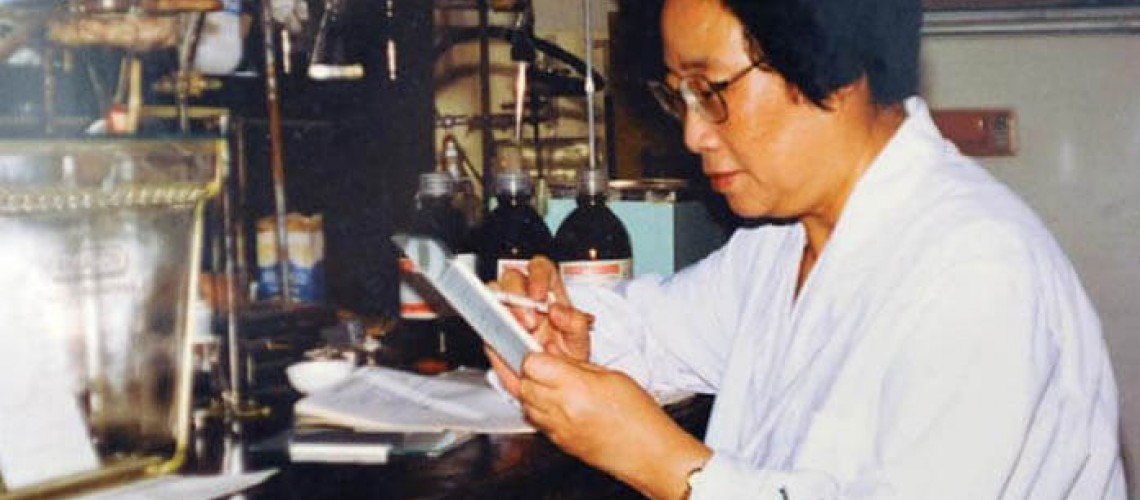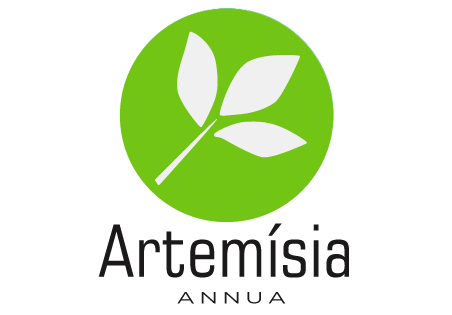TU YOUYOU DÉCOUVREZ ARTEMISIA

La médecine traditionnelle chinoise au service de la médecine moderne.
Tu Youyou prend en charge le projet en 1969 au sein de son institut, où se côtoient acteurs de la médecine traditionnelle et moderne. Le scientifique fouille dans la littérature de la médecine traditionnelle chinoise. Deux mille remèdes sont sélectionnés, explique Evelyn Strauss. Elles seront revues et corrigées, et en 1971 l'équipe de Tu Youyou produit 380 extraits médicinaux de 200 plantes.
Reste à trouver celui qui combat efficacement Plasmodium, le parasite responsable du paludisme transmis à l'homme par Anopheles. Celui qui vient de Qing Hao (Artemisia annua L) inhibe sa multiplication dans le sang des animaux. Mais les résultats obtenus sont impossibles à reproduire.
Description du processus de recherche qui a conduit à la découverte de l'artémisinine par le chercheur chinois Tu Youyou, co-lauréat du prix Nobel de médecine 2015 (JONATHAN NACKSTRAND / AFP)
Une question de température
Tu Youyou plonge alors dans les grimoires médicaux chinois et finit par trouver la solution à son problème. La technique d'extraction doit être modifiée : désormais elle se fera à basse température pour préserver les propriétés cicatrisantes de la molécule. Lors d'une réunion au sommet des membres du Projet 523, la chercheuse a annoncé en mars 1972 qu'elle avait obtenu des résultats concluants sur des rats et des singes.
Les premiers tests chez l'homme concernent 21 personnes et sont réalisés dans la province de Hainan (sud de la Chine) : la moitié des patients sont porteurs du plasmodium falciparum (la forme la plus virulente) et l'autre moitié du plasmodium vivax (la plus fréquente ). L'artémisinine, dans sa forme la plus pure, a été officiellement obtenue le 8 novembre 1972. Le premier rapport en anglais mentionnant pour la première fois les travaux de l'équipe chinoise était disponible en décembre 1979.
Pendant ce temps, des chercheurs chinois ont lancé de vastes essais cliniques. Conclusion : L'artémisinine est beaucoup plus efficace que la chloroquine et la quinine. L'Organisation mondiale de la santé (OMS) a invité Tu Youyou à présenter ses travaux en octobre 1981. Outre l'artémisinine, il mentionne un dérivé de la molécule redoutable et efficace, la dihydroartémisinine. La molécule extraite de l'armoise annuelle est aujourd'hui à la base des traitements antipaludiques.

Dans la recherche de médicaments potentiels contre le paludisme, Tu et son groupe de travail ont analysé en partenariat avec le gouvernement chinois et sur la base de la médecine traditionnelle chinoise, de nombreuses plantes médicinales traditionnelles. En 1971, le composé actif a été isolé de l'artemisia annua, introduite en 1972. En 1973, elle a synthétisé le dérivé le plus puissant, la dihydroartémisinine. Les travaux ultérieurs se sont concentrés sur l'utilisation de l'artémisinine et de ses dérivés dans d'autres maladies. Pour la découverte de l'artémisinine, un médicament contre le paludisme qui a sauvé des millions de personnes dans le monde, en particulier dans les pays en développement, elle a reçu le prix Lasker-DeBakey pour la recherche médico-clinique 2011.
Elle a reçu le « Prix national des inventions » et le « Prix national des dix meilleures découvertes dans le domaine de la science et de la technologie » pour les résultats de ses recherches. Elle a reçu en outre les titres suivants : « Éminent scientifique » (premier groupe) par la nation chinoise en 1984, l’une des « dix femmes les plus éminentes » par le gouvernement central en 1994, « Travailleur national d’avant-garde » par le Ministère national en 1995 et « inventrice du nouveau siècle » par l’Office d’État de la propriété intellectuelle de la République populaire de Chine (SIPO) en 2002.
Elle est devenue « professeur titulaire », « professeur-présidente », directrice de recherche à l’Académie de médecine chinoise traditionnelle de Chine à Pékin et responsable du Centre de recherche-développement sur l’artémisinine de cette académie. Depuis lors, elle a obtenu de nouveaux résultats dans la recherche de ce principe actif de la plante armoise annuelle (qing hao (青蒿)) et de ses dérivés.
Elle est lauréate du prix Albert-Lasker pour la recherche médicale clinique 2011 pour ses travaux sur l'artémisinine et du prix Nobel de physiologie ou médecine 2015.















































